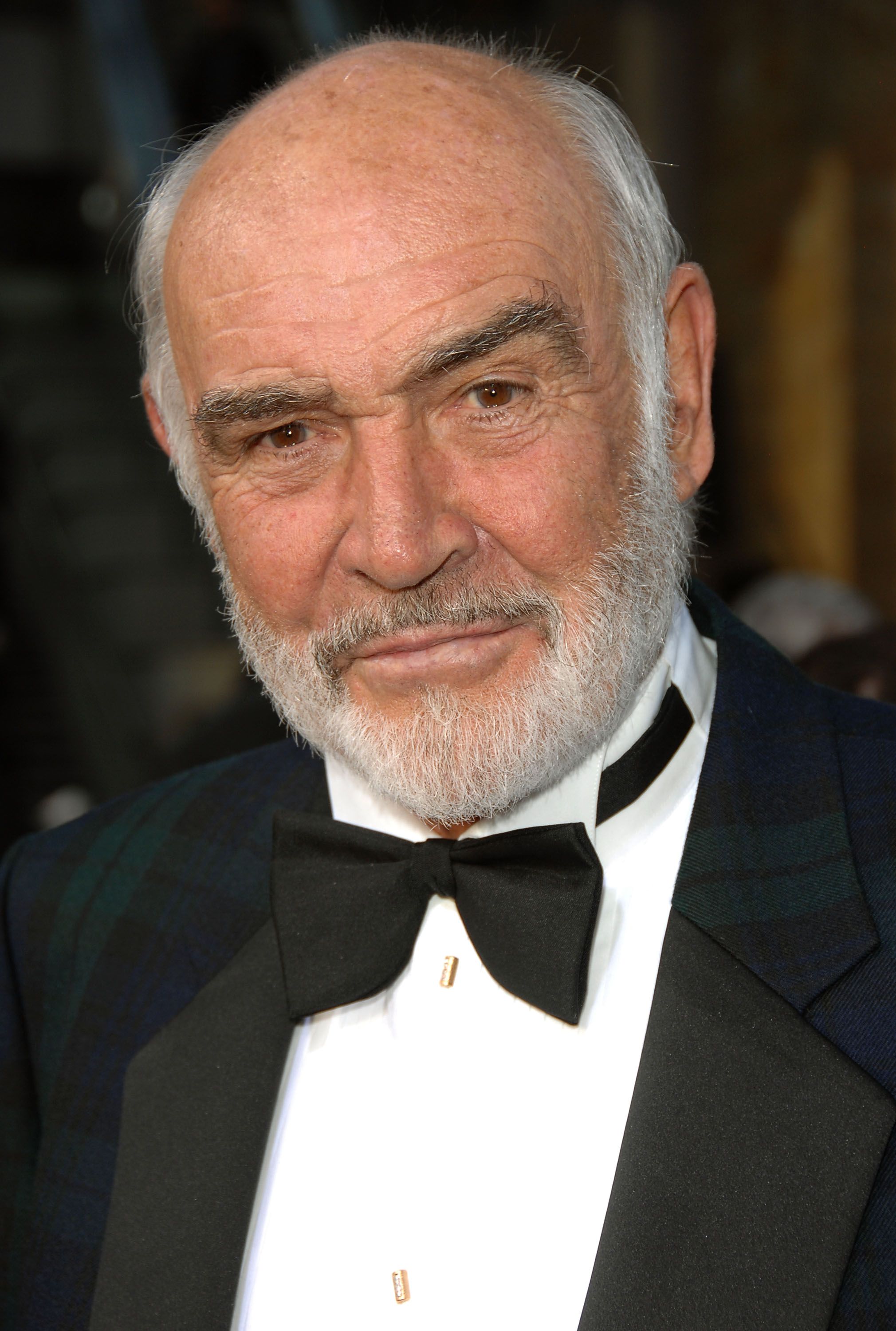Sean Yseult Husband - Unpacking Names And Words
Names carry a certain weight, don't they? They often hold stories, histories, and sometimes, a little bit of mystery. When we hear a name like "Sean," it might spark a thought about its origins or how it connects to people we know, or perhaps figures who catch our interest, like someone who might be a Sean Yseult husband. It's a funny thing, how a simple word can open up so many avenues for thought, so in a way, we are looking at how names work.
The name "Sean," as it happens, has a rather interesting journey. It's a way the Irish language takes the English name "John" and makes it its own, letting it be spoken with sounds that fit the Irish tongue. This process, where words move from one language to another and change a bit along the way, shows how languages borrow from each other, too it's almost a dance between different ways of speaking.
So, when you consider names and how they are used, it's not just about who someone is, but also about the language we use to talk about them. Whether we are discussing a friend, a public figure, or someone like a Sean Yseult husband, the words and grammar we pick really matter. We often find ourselves asking little questions about what's the proper way to say something, or why certain words are shaped the way they are, that is a common thing to wonder about.
Table of Contents
- The Name Sean - A Closer Look
- Grammar Puzzles - Speaking About Sean Yseult Husband
- The Short Forms - Why Are Names Like John and Robert Changed?
- Punctuation Matters - A Comma's Place
- Using Contractions - The Case of "He's"
The Name Sean - A Closer Look
The sounds we make when we say names can be quite different from how they look on paper. Take the name "Sean," for example. It's an Irish way of writing "John," but it sounds quite distinct. This change in how a name is written and spoken, moving from one language to another, is a pretty common thing across the globe. It shows how languages are always in motion, adapting and taking on new forms, you know, as they meet other languages.
What's in a Name - The Origins of Sean Yseult Husband's Name?
When we think about names, like perhaps the name of a Sean Yseult husband, we might wonder about where those names come from. The name "Sean" itself is a good example of how names travel and change. It's basically the Irish version of "John," meaning it's been made to fit the sounds and spelling rules of the Irish language. This process is called hibernization, and it's how a name like "John" gets a distinctly Irish twist. So, it's not just a simple copy, but rather a thoughtful transformation, that is something to keep in mind.
This transformation is quite common for names that cross language borders. Imagine a name starting in one language, then being adopted by another. The new language often shapes the sounds and letters to fit its own patterns. This means that while the core meaning or origin might stay the same, the way it looks and sounds can become quite different. It's a bit like a word changing its clothes to fit in with a new crowd, you know, a different way of speaking.
- Lilmermaidxx Nude Pics
- Lavaxgrll Leaked Sex Tape
- Sophie Hart Onlyfans
- Beldots Of Leaks
- Bros Uncovered Intimate Glimpses Into The World Of Bicurious Boys
The practice of adapting names is a long-standing tradition. It helps names feel natural to speakers of a new language, making them easier to say and remember. This is why "John" becomes "Sean" in Irish, or why other names have their own unique forms in different tongues. It speaks to the flexibility of language and its ability to absorb and transform, basically, to make things its own.
How Do We Say Sean - And Other Naming Quirks?
The way we say words, especially names, can sometimes surprise us. The spelling of "Sean" with an 's' followed by a vowel, yet often pronounced with a 'sh' sound, is a good example of a common pattern in Irish and Scottish Gaelic. Think about how someone like Sean Connery speaks; the 'se' at the start of his name makes that distinct 'sh' sound. This is a very common feature in those languages, a bit like a secret handshake for words, if you will.
Many words in these languages follow this pattern, where the written form gives a clue to a pronunciation that might seem unexpected to English speakers. It shows how different language systems have their own rules for linking letters to sounds. This is why learning to pronounce names from other languages often means learning a new set of sound rules, you know, a different way to put sounds together.
Understanding these pronunciation quirks helps us say names correctly and appreciate the richness of different languages. It's not just about getting the sound right, but also about respecting the linguistic heritage behind the name. So, when you hear a name like "Sean," or perhaps even think about how someone like a Sean Yseult husband might pronounce his own name, you're hearing a piece of language history, which is pretty cool.
Grammar Puzzles - Speaking About Sean Yseult Husband
Beyond names, the way we put words together to make sentences can also be a source of little puzzles. We often find ourselves wondering about the correct way to phrase something, especially when talking about ourselves and others. These small grammatical choices can make a big difference in how our message is received, and in fact, how clear we are being.
When Do We Say "I" or "Me" - A Rule for Sean Yseult Husband?
One common question that pops up is whether to use "I" or "me" when you're talking about yourself and another person, perhaps even when referring to someone like a Sean Yseult husband. For instance, should it be "my wife and I" or "my wife and me"? A simple rule of thumb that many people follow is to put yourself last in a list of people. It's often seen as a polite way to speak, a matter of common courtesy, which is a nice touch, really.
When it comes to the grammar, "I" is used when you are the one doing the action in the sentence, the subject. "Me" is used when you are receiving the action, the object. So, if you remove the other person from the sentence, it should still make sense. For example, "My wife and I went to the game" works because "I went to the game" works. But "They went to the game with my wife and I" doesn't work because "They went to the game with I" sounds off. It should be "They went to the game with my wife and me," because "They went to the game with me" makes sense, you know, as a sentence.
This little trick can help clear up confusion about which word to pick. It's a small detail, but getting it right can make your sentences sound much smoother and more correct. So, whether you are talking about a seafood dinner collaboration with a partner, or just going to a game with a friend, paying attention to "I" and "me" helps your words flow better, that is a useful thing to know.
What About "Myself" - Is It Always for Emphasis?
Another word that often causes a bit of head-scratching is "myself." People sometimes use "myself" when "I" or "me" would be the more typical choice. However, the word "myself" and other similar words like "himself" or "herself" are usually for adding a bit of extra importance or focus to something. This use of these words for emphasis is a perfectly normal part of how English works, so it's not always a mistake, you know, to use them.
For example, if someone says, "I myself saw the whole thing," they are really trying to make it clear that *they personally* were there and witnessed it. The word "myself" here draws special attention to the speaker. It adds a layer of confirmation, making the statement stronger. It's not just that they saw it, but that *they* did, in fact, see it, which is a subtle but important difference.
So, while it's good to use "I" or "me" in most everyday sentences, when you want to put a spotlight on the person doing or receiving the action, "myself" can be the perfect word. It’s a tool for adding a little punch to your message, a way to underscore a point. This can be quite useful when you are trying to make sure your audience truly understands who is involved, perhaps in a story about a Sean Yseult husband, or anyone else for that matter, you know, just to be clear.
The Short Forms - Why Are Names Like John and Robert Changed?
Have you ever wondered why someone named "Robert" might be called "Bob," or why "John" sometimes becomes "Jack"? This practice of changing names into shorter, more familiar forms is a very old and interesting part of language. It's not just a random thing; there are often historical and linguistic reasons behind these shifts, that is a pretty cool thing to learn about.
The History Behind Nicknames - Like for Sean Yseult Husband's Friends
The way full names turn into nicknames, like "John" becoming "Jack" or "Robert" turning into "Bob," has a long and rather interesting past. These shorter forms, sometimes called hypocorisms, often came about because people wanted a more informal or affectionate way to address someone. It's a bit like giving a friend a special, shorter name that only close people use, which is pretty common, you know, among friends.
Historically, some of these nickname changes involved sound shifts that were common in earlier forms of English. For example, the "J" sound in "John" could sometimes be replaced by a "G" or "K" sound over time, leading to names like "Jack." Similarly, "Robert" might have gone through changes that led to "Rob" and then "Bob." These changes weren't planned; they just happened naturally as language evolved and people found new ways to say things more quickly or fondly, that is a kind of natural process.
So, when you hear someone refer to a "Bob" instead of a "Robert," or a "Jack" instead of a "John," you are seeing a living piece of language history. It shows how names are not fixed things, but rather flexible and adaptable, changing with the times and the ways people speak to each other. It's a reminder that language is always moving and shaping itself, very much like a river, you know, always flowing.
Punctuation Matters - A Comma's Place
Small marks like commas might seem unimportant, but they can really change the meaning of a sentence, or at least make it clearer. Knowing where to put a comma, or when to leave it out, is a bit like knowing the right moment to pause when you are speaking. It helps the listener, or reader, understand exactly what you mean, that is a really important thing.
Does a Comma Change the Meaning - In Regards to Sean Yseult Husband's Business?
Consider the difference a comma makes in a sentence like "Thanks, John." Here, the comma shows that you are directly speaking to John, thanking him. If you were to leave out the comma, "Thanks John" could, in some very specific and strange contexts, be misread as if you are thanking something *called* "Thanks John," which is clearly not what you mean. The comma makes it clear that "John" is the person you are addressing, you know, the one you are talking to.
This simple example highlights how punctuation guides the reader's understanding. It helps avoid confusion and ensures that the message is received as intended. In a business setting, for instance, clear communication is absolutely key. If you are talking about how a company, RMT, LLC, will be managed by Sally Red, CEO, and Sean Brown, COO, the commas around "CEO" and "COO" help separate their titles from their names and roles, making the structure very clear. Without those commas, it could become a bit jumbled, which is something you want to avoid, really.
The presence or absence of a comma can signal different relationships between words and phrases. It's a small mark with a lot of power to shape meaning. So, while it might seem like a tiny detail, paying attention to commas can greatly improve the clarity of your writing, which is something we all want, naturally, when we are trying to get a point across.
Using Contractions - The Case of "He's"
Contractions are a common part of everyday language, helping us speak and write more quickly. Words like "he's" are used all the time, but sometimes people wonder exactly what they stand for. It's a handy shortcut, but knowing its full meaning helps us use it correctly, and that is pretty important, too.
When Is "He's" Correct - For Sean Yseult Husband's Actions?
The contraction "he's" is a very versatile little word, but it has specific uses. It can stand for two different phrases: "he is" and "he has." You might say, "He's going to the store" (meaning "he is going to the store") or "He's got a new car" (meaning "he has got a new car"). Both of these uses are perfectly fine and common in conversation and writing, you know, for everyday talk.
However, it's important to know when "he's" doesn't work. You wouldn't say "He's something" if you mean "he has something" without the "got." For example, you wouldn't say "He's a car" to mean "he has a car." Instead, you would say "He has a car" or "He's got a car." The "got" is usually needed when "he's" is used for possession. This little rule helps keep our sentences grammatically sound, which is a good thing to aim for, basically.
Understanding these subtle differences helps us communicate more precisely. Whether you are talking about what someone is doing, or what they possess, using "he's" correctly ensures your message is clear. It's a small point of grammar, but it contributes to the overall polish of your language. So, when you are talking about someone's activities or possessions, perhaps even those of a Sean Yseult husband, knowing how to use "he's" properly makes a difference, that is quite true.



Detail Author:
- Name : Dr. Oliver Jenkins
- Username : jlynch
- Email : aurore48@yahoo.com
- Birthdate : 1984-10-03
- Address : 727 June Dale Apt. 078 Ratkeland, UT 71157
- Phone : 818.514.8025
- Company : Brakus Group
- Job : Oil Service Unit Operator
- Bio : Fugit illum aut ut. Tempora cum omnis laboriosam placeat qui aut magni et. Vero distinctio eum dolores libero cum.
Socials
linkedin:
- url : https://linkedin.com/in/sonya.koelpin
- username : sonya.koelpin
- bio : Sed nobis eaque unde quo debitis inventore.
- followers : 5457
- following : 613
facebook:
- url : https://facebook.com/sonya3939
- username : sonya3939
- bio : Enim excepturi quo non accusantium.
- followers : 697
- following : 2662
tiktok:
- url : https://tiktok.com/@sonya.koelpin
- username : sonya.koelpin
- bio : Ex ipsum occaecati omnis aliquam qui quas dolores.
- followers : 2723
- following : 1300
twitter:
- url : https://twitter.com/sonyakoelpin
- username : sonyakoelpin
- bio : Aut dolore porro blanditiis eaque velit voluptas. Quia est eos a explicabo cumque eius quaerat labore. Dignissimos a corrupti cum molestiae molestiae.
- followers : 4980
- following : 1452
instagram:
- url : https://instagram.com/koelpins
- username : koelpins
- bio : In dolor dolorem ut architecto placeat debitis. Fugiat esse et iste.
- followers : 5822
- following : 1849